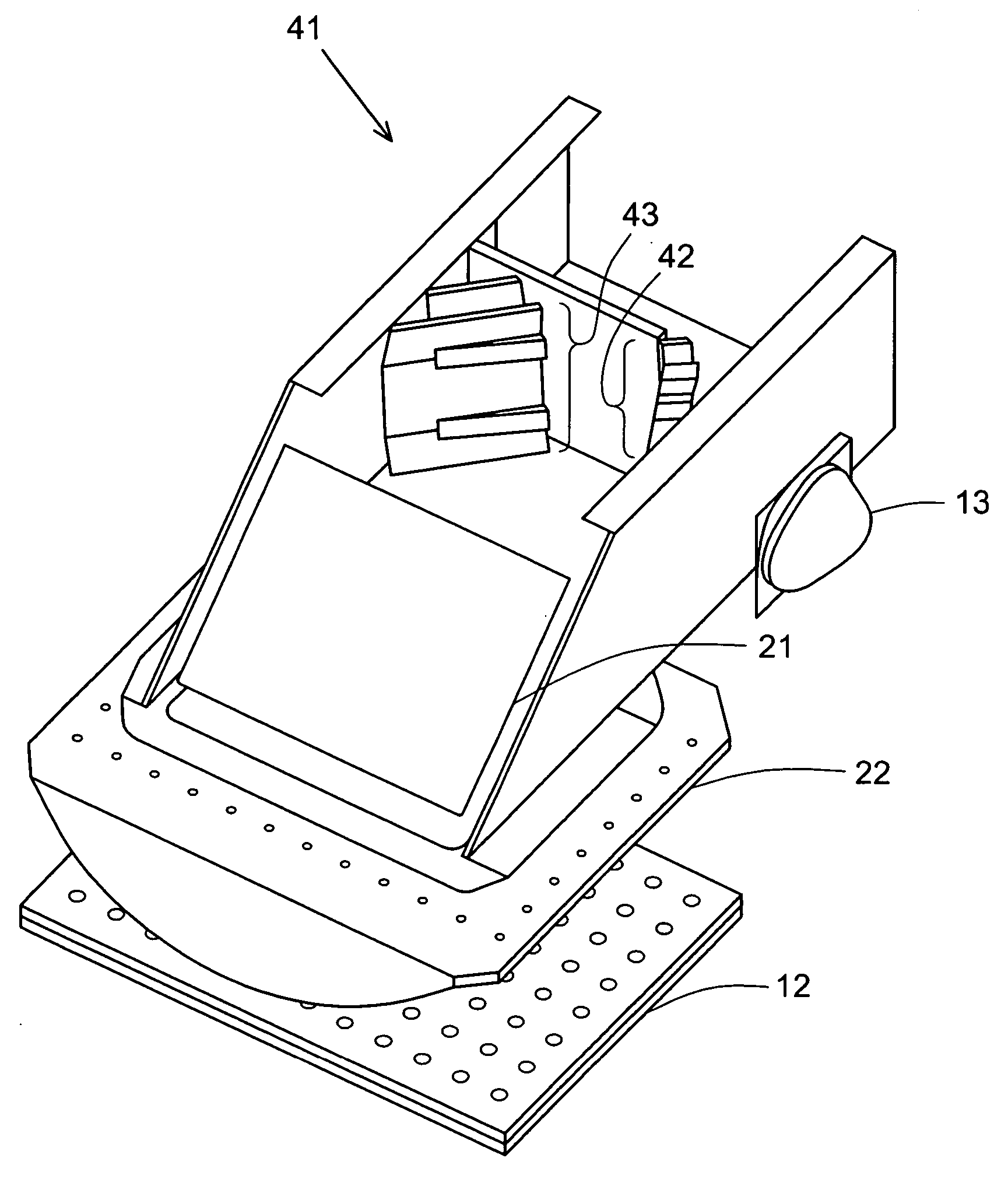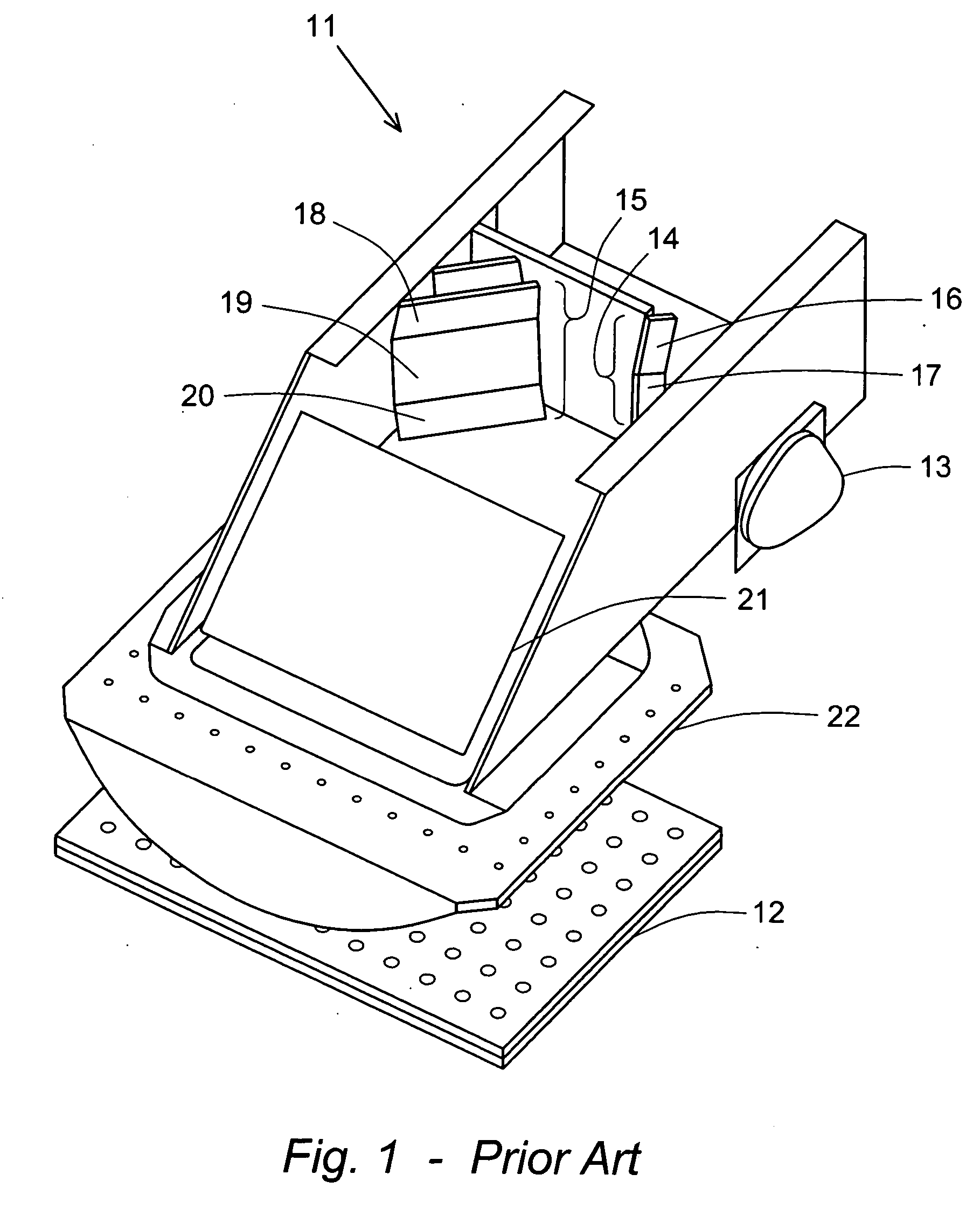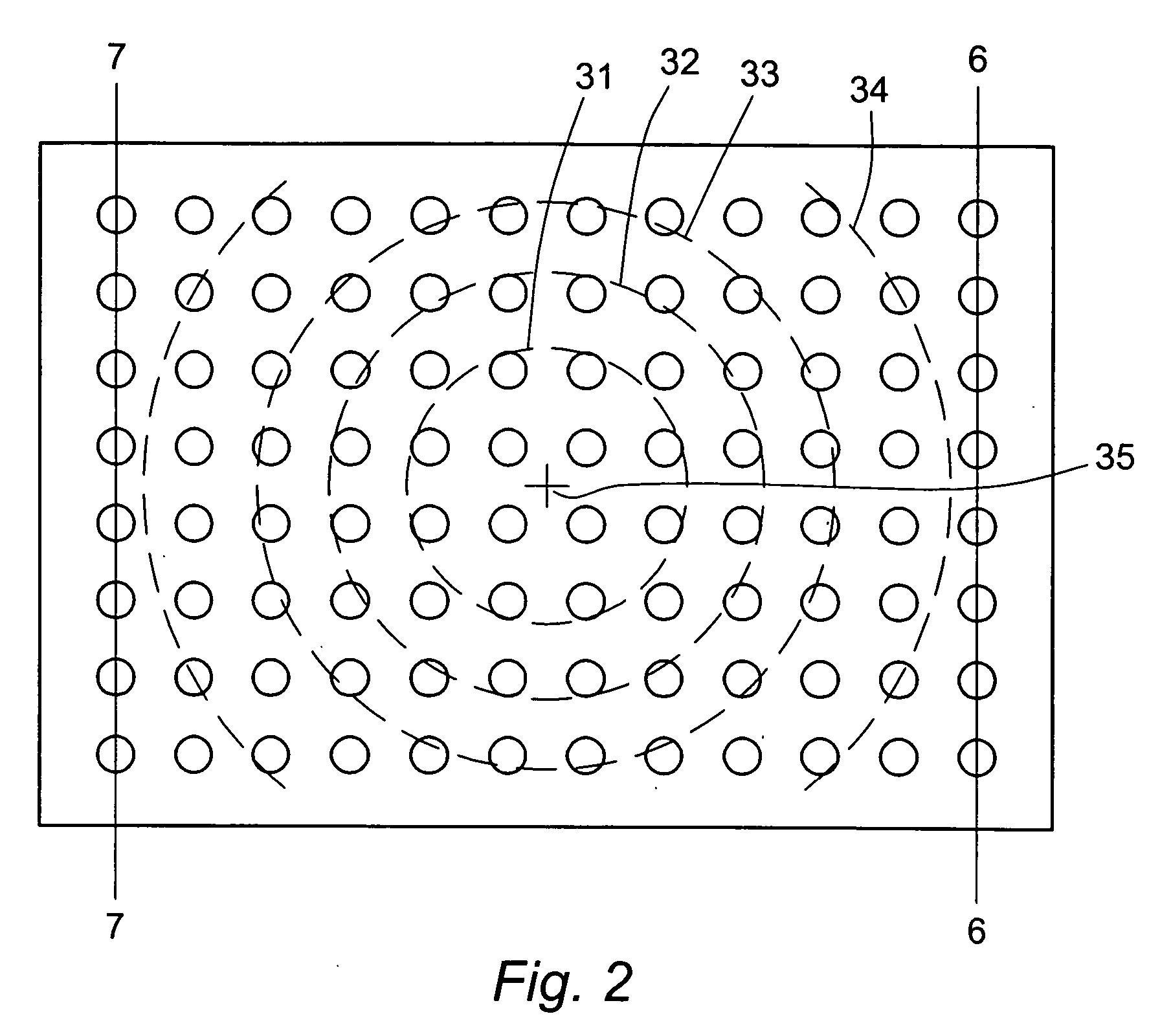Incident light redistribution to compensate for radial gradient in detector
a detector and incident light technology, applied in the direction of optical radiation measurement, luminescent dosimeter, instruments, etc., can solve the problem of not fully achieving the goal
- Summary
- Abstract
- Description
- Claims
- Application Information
AI Technical Summary
Benefits of technology
Problems solved by technology
Method used
Image
Examples
Embodiment Construction
[0018] While the invention is susceptible to certain variations and a range of embodiments, the defining features of the invention are best understood by a detailed study of a single embodiment. One such embodiment is shown in FIGS. 3, 4, and 5 and described below.
[0019] The various mirrors that are the subject of this invention are segmented mirrors, and each segment is itself a planar mirror as distinguished from mirrors with curved surfaces. The various segments are oriented at angles relative to each other and adjacent segments share a common boundary or seam line, in the manner of facets in a faceted mirror. The term “linearly joined” is used herein to denote mirror segments that are joined sequentially side-to-side to form a chain. The term “segment” when used to describe a portion of a mirror refers to a single planar facet or section.
[0020] The terms “comprise,”“comprises,” and “comprising,” unless otherwise indicated, are used herein to denote the inclusion of the element...
PUM
 Login to View More
Login to View More Abstract
Description
Claims
Application Information
 Login to View More
Login to View More - R&D
- Intellectual Property
- Life Sciences
- Materials
- Tech Scout
- Unparalleled Data Quality
- Higher Quality Content
- 60% Fewer Hallucinations
Browse by: Latest US Patents, China's latest patents, Technical Efficacy Thesaurus, Application Domain, Technology Topic, Popular Technical Reports.
© 2025 PatSnap. All rights reserved.Legal|Privacy policy|Modern Slavery Act Transparency Statement|Sitemap|About US| Contact US: help@patsnap.com



